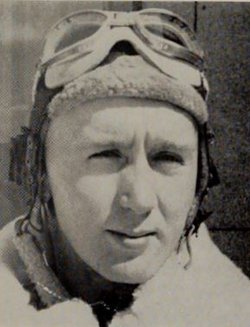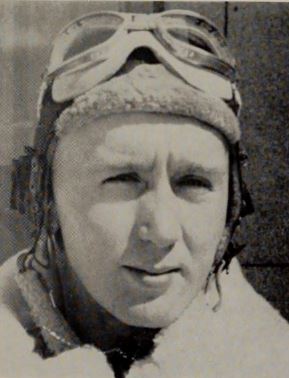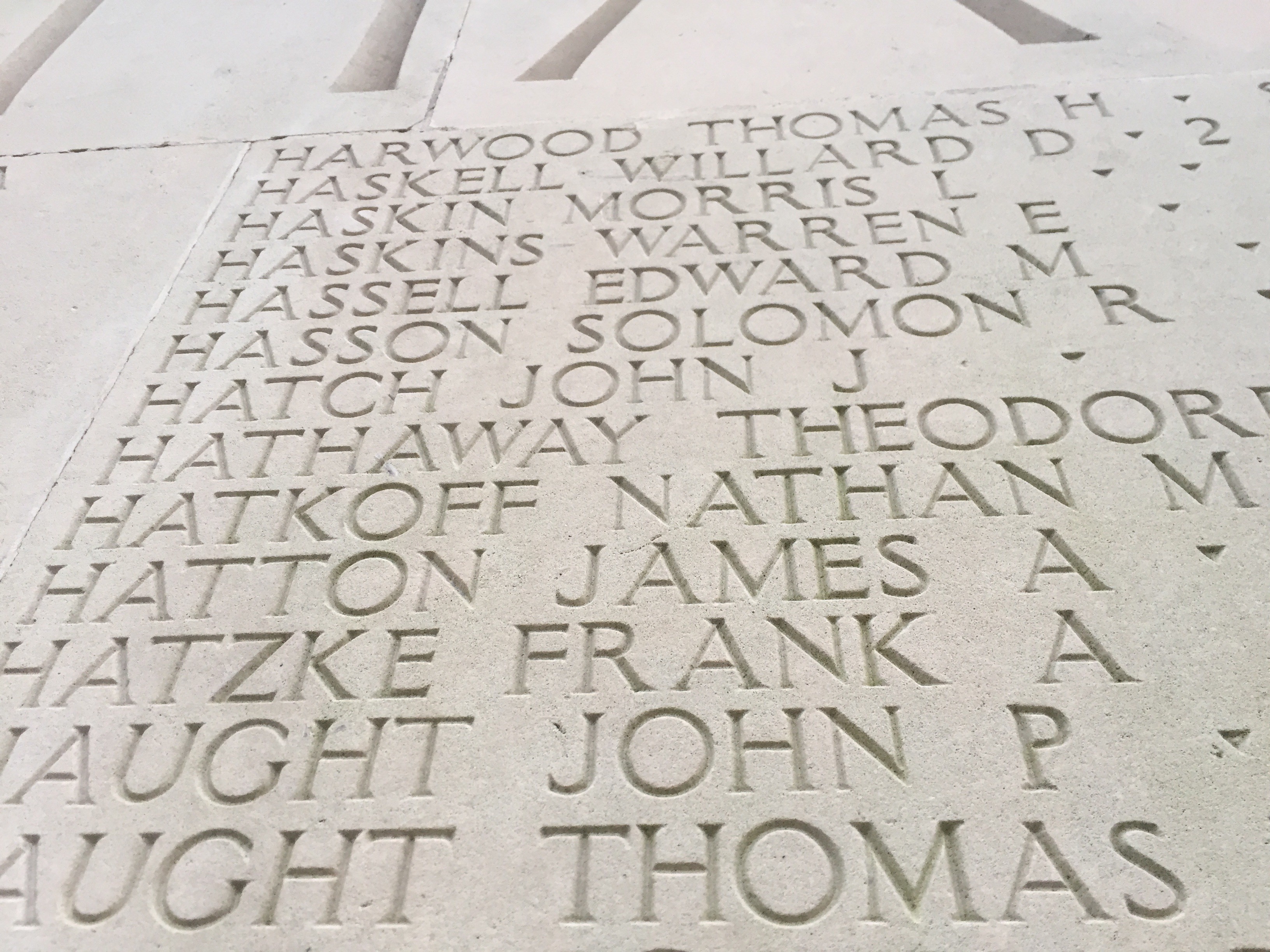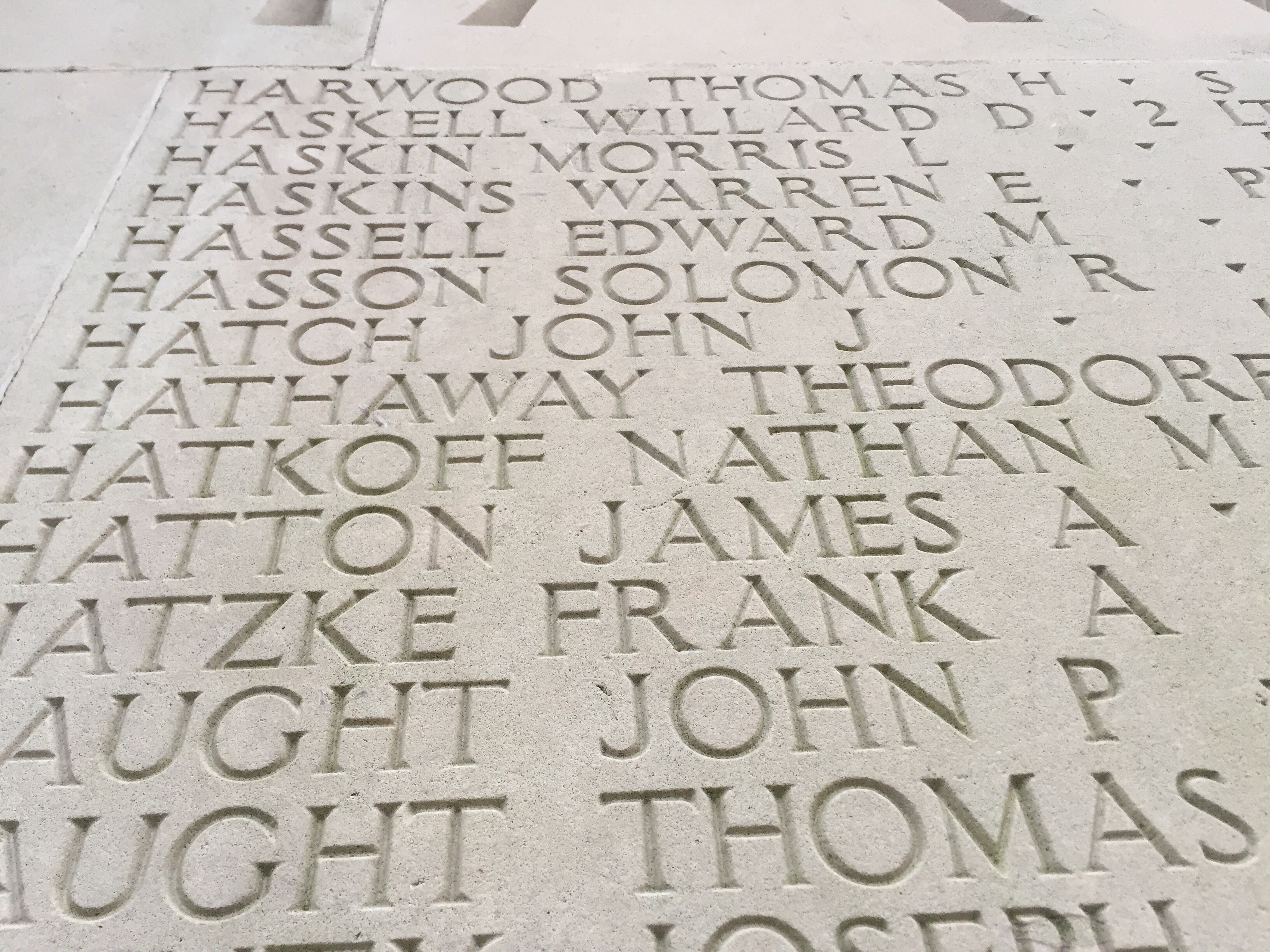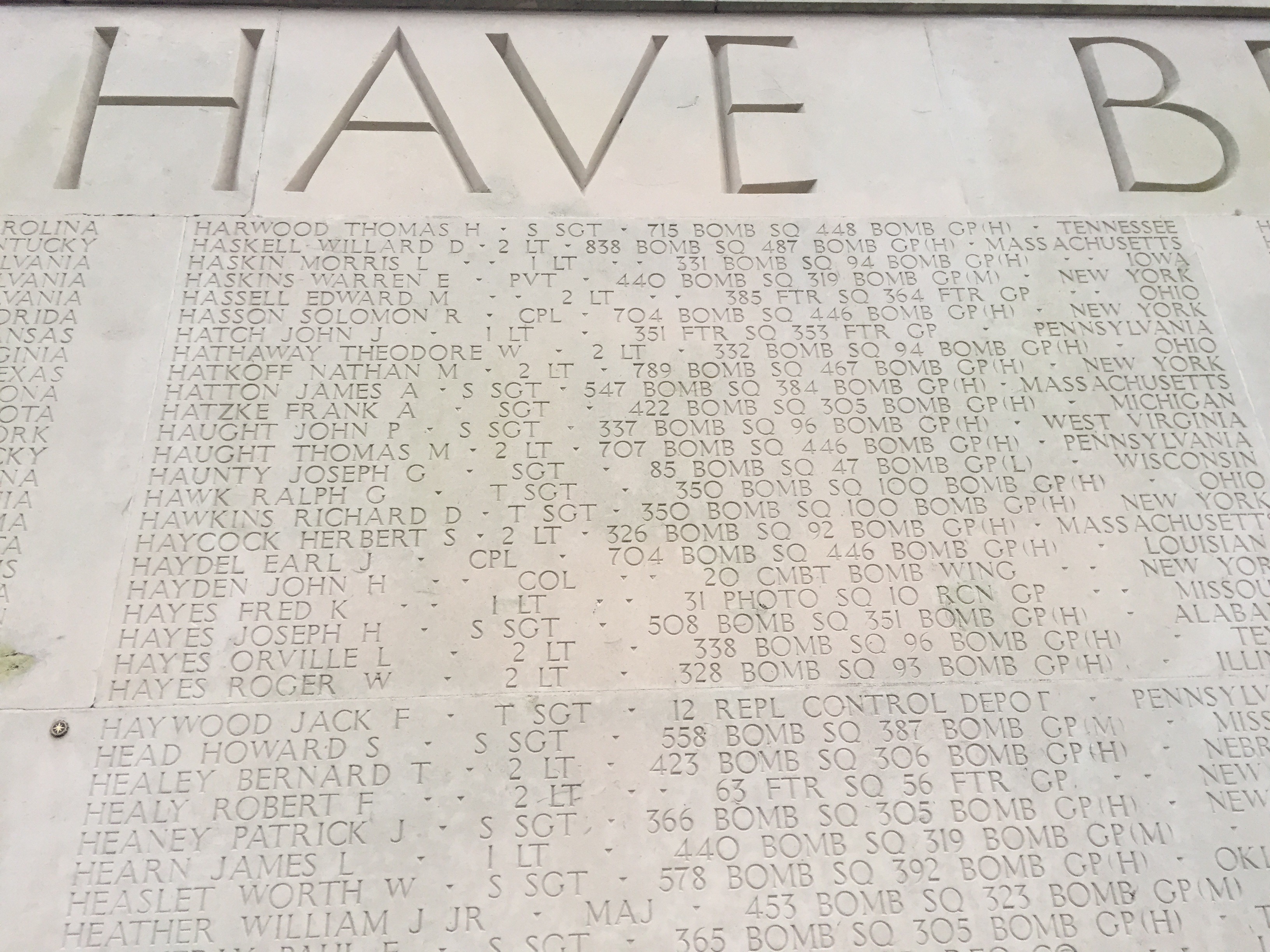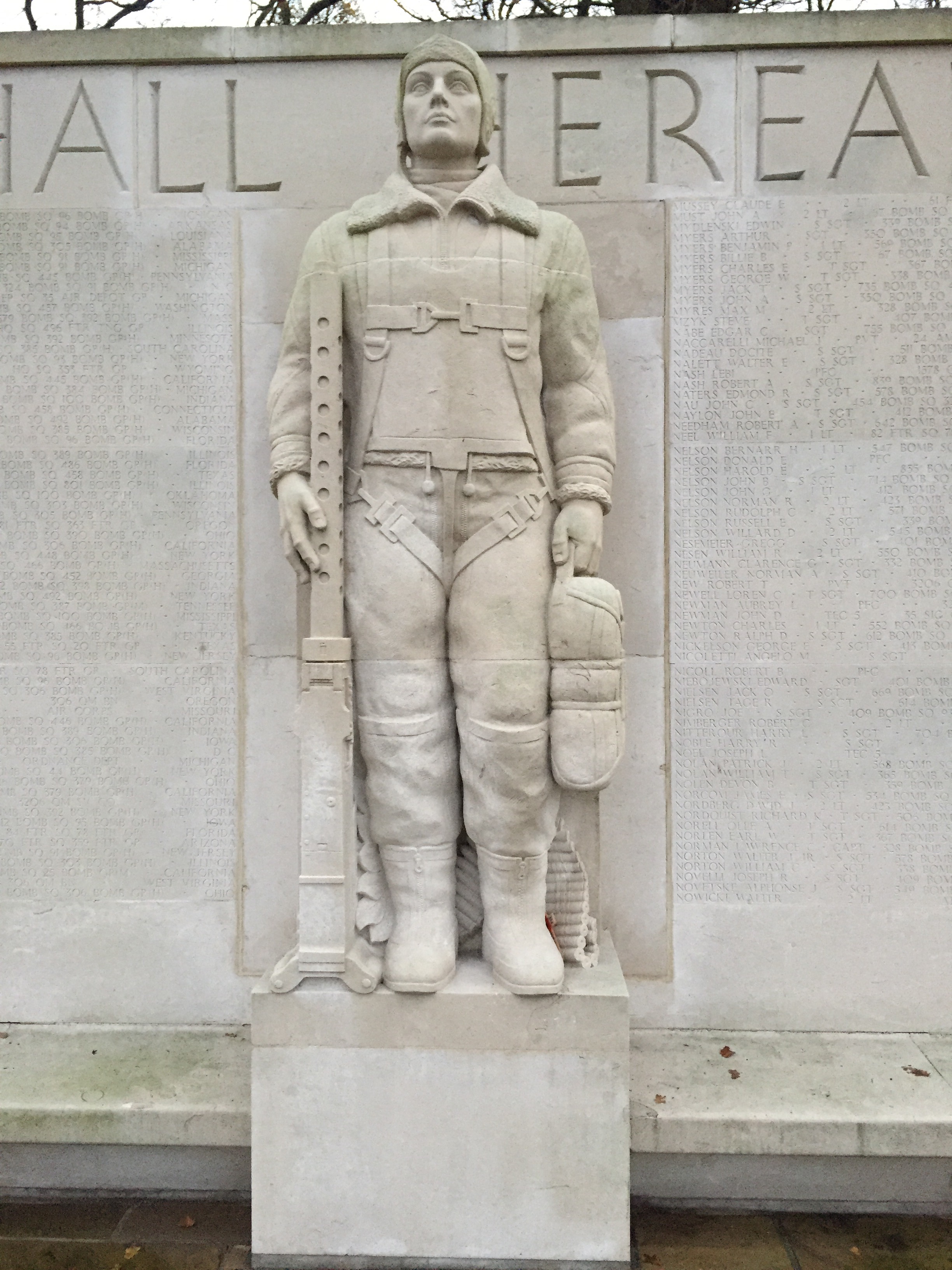Enlistment Date: 03/09/1943
Entered the Service From: Massachusetts
547th Bomb Squadron, 384th Bomb Group, Heavy
Awards: Air Medal, Purple Heart
James A. Hatton is listed as Killed In Action in the 1946 Army and Army Air Forces Personnel Casualty List for Suffolk County, Massachusetts.
Information below gleaned from: https://thearrowheadclub.com/2016/04/13/missing-in-action-1944/
May 8, 1944
James Wesley Brown (pilot on his fourth mission), Donald Vernon Chubb (co-pilot on his third mission), Kenneth Myron Jones (navigator on his third mission), Merle Ernest Ingmire (engineer/top turret gunner on his fourth mission), Joseph John Kozar (radio operator on his third mission), James Augustine Hatton (ball turret gunner on his third mission), and Julius Eugene McClintick (waist gunner on his third mission) were aboard aircraft 42-97081. The target was a Crossbow (V-weapon) service bunker in Sottevast, France.
The aircraft was struck by flak immediately after the bomb run, peeled out of the formation, and headed for England. The crew had to ditch in the English Channel thirteen miles off the French coast on the return trip back to Grafton Underwood. The bombardier and tail gunner were rescued, but the rest of the crew did not survive.
The body of one waist gunner was recovered, but the remainder of the crew were not recovered. Both the survivors, bombardier Carl William Kuba and tail gunner George Hallow Yeager, Jr., described the incident. I have combined their comments into this one description:
Shortly after the bomb run, flak struck the No. 4 engine and then the No. 1 engine. Both engines cut out. The Nos. 2 and 3 engines were working all right. The No. 4 engine caught fire and the crew considered bailing out.
The next burst of flak hit the tail wheel, knocking it off. The oxygen system was also knocked out. But after a check with everyone on the interphone, no one had been wounded by the flak.
Another burst of flak struck the left wing between the Nos. 1 and 2 engines and almost tore it from the aircraft. It was held on only by about 1 1/2 feet of the leading edge and about 1 foot of the trailing edge. The Engineer called and reported that there was fire between Nos. 1 and 2 engines in the main gas tank.
The bombardier jettisoned the bombs to reduce the weight of the aircraft. The pilot peeled out of formation to the left and headed for the English Channel. The fire in the No. 4 engine was extinguished and the crew believed they could make it back.
Because of the lack of oxygen, they were forced down to 13,000 feet. However flames continued to shoot out of the left wing and it became clear they could not make it back. The interphone became inoperative by the time they reached the Channel, and the pilot gave the signal to bail out about 1905 hours.
The tail gunner, Yeager, reported he was the seventh man to leave the ship. When he got into the water he had some difficulty in getting rid of his chute, as one side of it stuck. However, he finally got it off. He pulled the cords on his Mae West and it inflated and then deflated. He began swimming about. He did not see any of the others after he landed in the water.
The bombardier, Kuba, reported that he followed the navigator out of the plane as the eighth chute out. He delayed opening his chute to prevent drifting too far away from the rest of the crew. He pulled one side of his Mae West and when he hit the water, got rid of his chute.
Yeager reported an explosion in the aircraft when it was about five to six hundred feet above the water. It went into a dive and then hit the water and sank. It came back up and another explosion occurred and it began burning, staying afloat for about four to five minutes. According to Yeager, neither the Pilot or Co-Pilot bailed out.
A Spitfire dropped Kuba a dinghy, but he could not reach it, as it was about four to five hundred yards away. His clothing kept him warm and dry for awhile, but as the water successfully penetrated each garment, he discarded it. His fingers became numb and he was unable to remove his coveralls.
About 2045 hours Yeager was picked up by Air/Sea Rescue.
Kuba reported he was in the water for about one and one-half hours and was picked up by Air/Sea Rescue. He was informed by Air/Sea Rescue that all of the crew except two had died of exposure.
Waist gunner Donald E. Reis, who died of exposure, was the only body recovered. The other seven crewmen unaccounted for were also presumed to have died of exposure.
James Wesley Brown's name is listed on the Tablets of the Missing at Ardennes American Cemetery, in Neupré, Belgium. Donald Vernon Chubb's name is listed on the Tablets of the Missing in Normandy American Cemetery, Colleville-sur-Mer, France. James Augustine Hatton, Merle Ernest Ingmire, Kenneth Myron Jones, Joseph John Kozar, and Julius Eugene McClintick are all listed on the Tablets of the Missing at Cambridge American Cemetery, Cambridge, England.
***I would like to thank Andrew Find A Grave ID 47434455 for adding his photo of James to this memorial***
***I would like to thank Kathy Find A Grave ID 50119853 for adding her photos to this memorial***
***I would like to thank Ellefson Find A Grave ID 47368288 for updating the middle name and DOB information on this memorial***
Enlistment Date: 03/09/1943
Entered the Service From: Massachusetts
547th Bomb Squadron, 384th Bomb Group, Heavy
Awards: Air Medal, Purple Heart
James A. Hatton is listed as Killed In Action in the 1946 Army and Army Air Forces Personnel Casualty List for Suffolk County, Massachusetts.
Information below gleaned from: https://thearrowheadclub.com/2016/04/13/missing-in-action-1944/
May 8, 1944
James Wesley Brown (pilot on his fourth mission), Donald Vernon Chubb (co-pilot on his third mission), Kenneth Myron Jones (navigator on his third mission), Merle Ernest Ingmire (engineer/top turret gunner on his fourth mission), Joseph John Kozar (radio operator on his third mission), James Augustine Hatton (ball turret gunner on his third mission), and Julius Eugene McClintick (waist gunner on his third mission) were aboard aircraft 42-97081. The target was a Crossbow (V-weapon) service bunker in Sottevast, France.
The aircraft was struck by flak immediately after the bomb run, peeled out of the formation, and headed for England. The crew had to ditch in the English Channel thirteen miles off the French coast on the return trip back to Grafton Underwood. The bombardier and tail gunner were rescued, but the rest of the crew did not survive.
The body of one waist gunner was recovered, but the remainder of the crew were not recovered. Both the survivors, bombardier Carl William Kuba and tail gunner George Hallow Yeager, Jr., described the incident. I have combined their comments into this one description:
Shortly after the bomb run, flak struck the No. 4 engine and then the No. 1 engine. Both engines cut out. The Nos. 2 and 3 engines were working all right. The No. 4 engine caught fire and the crew considered bailing out.
The next burst of flak hit the tail wheel, knocking it off. The oxygen system was also knocked out. But after a check with everyone on the interphone, no one had been wounded by the flak.
Another burst of flak struck the left wing between the Nos. 1 and 2 engines and almost tore it from the aircraft. It was held on only by about 1 1/2 feet of the leading edge and about 1 foot of the trailing edge. The Engineer called and reported that there was fire between Nos. 1 and 2 engines in the main gas tank.
The bombardier jettisoned the bombs to reduce the weight of the aircraft. The pilot peeled out of formation to the left and headed for the English Channel. The fire in the No. 4 engine was extinguished and the crew believed they could make it back.
Because of the lack of oxygen, they were forced down to 13,000 feet. However flames continued to shoot out of the left wing and it became clear they could not make it back. The interphone became inoperative by the time they reached the Channel, and the pilot gave the signal to bail out about 1905 hours.
The tail gunner, Yeager, reported he was the seventh man to leave the ship. When he got into the water he had some difficulty in getting rid of his chute, as one side of it stuck. However, he finally got it off. He pulled the cords on his Mae West and it inflated and then deflated. He began swimming about. He did not see any of the others after he landed in the water.
The bombardier, Kuba, reported that he followed the navigator out of the plane as the eighth chute out. He delayed opening his chute to prevent drifting too far away from the rest of the crew. He pulled one side of his Mae West and when he hit the water, got rid of his chute.
Yeager reported an explosion in the aircraft when it was about five to six hundred feet above the water. It went into a dive and then hit the water and sank. It came back up and another explosion occurred and it began burning, staying afloat for about four to five minutes. According to Yeager, neither the Pilot or Co-Pilot bailed out.
A Spitfire dropped Kuba a dinghy, but he could not reach it, as it was about four to five hundred yards away. His clothing kept him warm and dry for awhile, but as the water successfully penetrated each garment, he discarded it. His fingers became numb and he was unable to remove his coveralls.
About 2045 hours Yeager was picked up by Air/Sea Rescue.
Kuba reported he was in the water for about one and one-half hours and was picked up by Air/Sea Rescue. He was informed by Air/Sea Rescue that all of the crew except two had died of exposure.
Waist gunner Donald E. Reis, who died of exposure, was the only body recovered. The other seven crewmen unaccounted for were also presumed to have died of exposure.
James Wesley Brown's name is listed on the Tablets of the Missing at Ardennes American Cemetery, in Neupré, Belgium. Donald Vernon Chubb's name is listed on the Tablets of the Missing in Normandy American Cemetery, Colleville-sur-Mer, France. James Augustine Hatton, Merle Ernest Ingmire, Kenneth Myron Jones, Joseph John Kozar, and Julius Eugene McClintick are all listed on the Tablets of the Missing at Cambridge American Cemetery, Cambridge, England.
***I would like to thank Andrew Find A Grave ID 47434455 for adding his photo of James to this memorial***
***I would like to thank Kathy Find A Grave ID 50119853 for adding her photos to this memorial***
***I would like to thank Ellefson Find A Grave ID 47368288 for updating the middle name and DOB information on this memorial***
Family Members
Other Records
Sponsored by Ancestry
Advertisement
Advertisement
